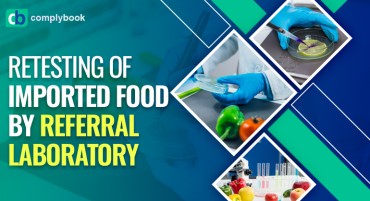

FSSAI Guidelines for Milk and Milk Products
What are FSSAI’s Guidance for Milk and Milk products?
India has been the world's biggest producer and consumer of dairy products since 1998, with a steady increase in the availability of milk and milk products. Dairy farming is a vital aspect of the rural Indian economy, providing both jobs and money. India also has the world's largest bovine population. However, when compared to other major dairy producers, milk production per animal is much lower. Furthermore, almost all of India's dairy products are consumed domestically, with the majority of it sold as fluid milk.
DESIGN AND FACILITIES
- To avoid contamination from the external environment, the milk and milk products production facility must be located away from environmentally polluted areas such as open sewage, drains, public restrooms, or any factory that produces disagreeable or obnoxious odours, fumes, excessive soot, dust, smoke, chemical or biological emissions. If it already exists, adequate control mechanisms must be implemented.
- Contamination must be avoided through design and layout. The establishment must be housed in a permanent structure that provides enough protection from environmental contaminants.
- Equipment and containers used for food handling, storage, processing, and packing that come into direct contact with food (including food contact surfaces) must be:
(a) Located, designed, and manufactured to allow for necessary maintenance and periodic cleaning.
(b) Maintained in good working order, repair, and condition to reduce the danger of contamination. These qualities include being free of cracks, fissures, and open seams, among others.
OPERATIONAL CONTROL
- Products should be clearly labelled as frozen, chilled, or ambient, along with their packaging and receipt date.
- Physical damage, shelf life, unsanitary conditions, temperature abuses, and pest infestation must all be checked at suitable intervals in order to detect degradation owing to numerous reasons, such as physical damage, shelf life, unsanitary conditions, and temperature abuses.
- Milk cans, storage/holding/process/transport tank, ice cream freezer, HTST Plate Pasteurizer/Heat Treatment Pasteurizer, homogenizer and cream separator, filing machines and filing machine nozzles, and other dairy plant equipment should be subjected to routine microbiological monitoring to verify the effectiveness of cleaning.
SANITATION AND MAINTENANCE
- Cleaning and sanitising programmes must be created at the plant to guarantee that the food processing equipment and environment are kept clean and sanitary to prevent food contamination from metal shards, flaking plaster, food debris, and chemicals, and records must be kept.
- The use of sequestering/chelating chemicals can help prevent water hardness precipitation.
- Preventive maintenance of equipment and machinery must be performed on a regular basis according to the manufacturer's specifications.
- All waste from the handling, processing, or packing of milk and milk products, as well as other waste materials, must be eliminated on a regular basis.
EMPLOYEE FACILITIES AND PERSONAL HYGIENE
- Before starting work, milk and milk product handlers at the manufacturing facility must receive a medical examination by a qualified medical practitioner, as well as annually thereafter, to guarantee that they are free of any infectious or communicable diseases. The results of these tests must be kept on file.
- Food handlers must maintain a high level of personal hygiene and wear appropriate work attire, headgear, and footwear that is clean and in good shape.
- Work wear must be sufficiently covered to prevent hair, beards, moustaches, perspiration, and other contaminants from contaminating the product.
- Clothing required for the protection or hygiene of milk and milk products may not be worn for any other purpose.
- Visitors to the Food Business's food manufacturing, processing, or handling areas must wear protective clothes and footwear, as well as follow all personal hygiene requirements in the food industry.



